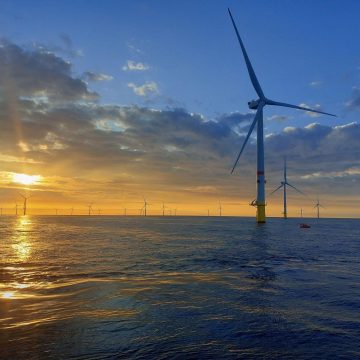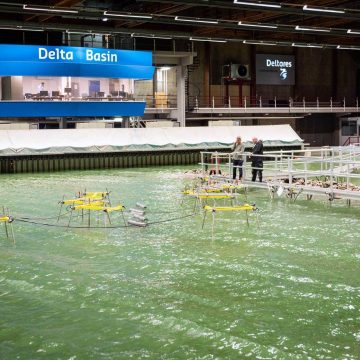Accelerating multi-use in offshore wind farms
The North Sea is foreseen to play a big role in our energy transition. The area required for offshore wind farms is huge, which can significantly challenge nature and food production at sea. How can we design and use offshore wind farms in such a way that they also function as food and energy plants and contribute to biodiversity restoration? Joint Industry Project TKI Road2SID presents a roadmap that combines existing knowledge, different stakeholder perspectives and advice on smarter use of space and nature-inclusive design.
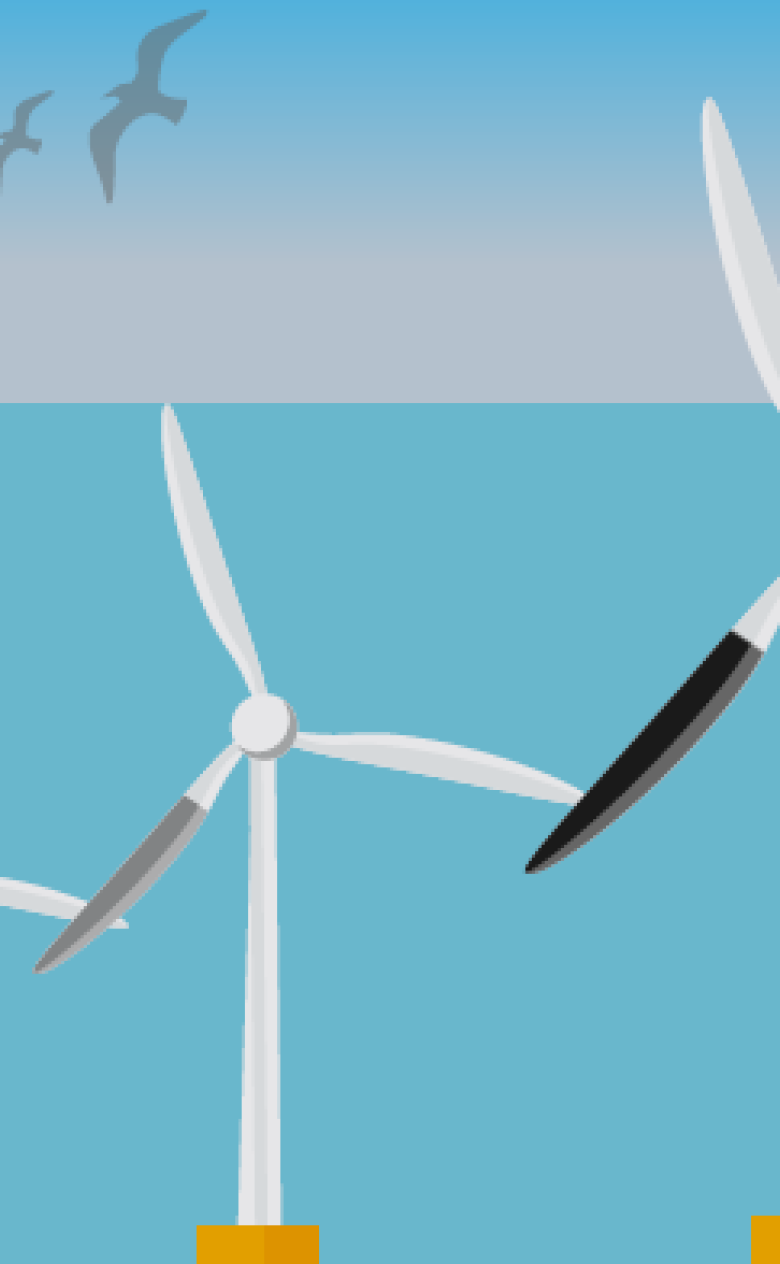
By 2050, we want to generate 70 GW of wind energy, through wind farms in the Dutch part of the North Sea. The North Sea may seem empty and vast to some, but it is already home to many different human activities, such as fishing, and accommodates a diverse yet impoverished marine ecosystem. In addition, other types of food production, such as oyster or seaweed farming, must remain possible in the future. Space will also soon be needed for infrastructure that transports energy from new wind farms, floating solar panels, wave power or hydrogen production. Sand extraction for coastal protection, safe shipping and activities for defense and recreation complete the puzzle on the North Sea.
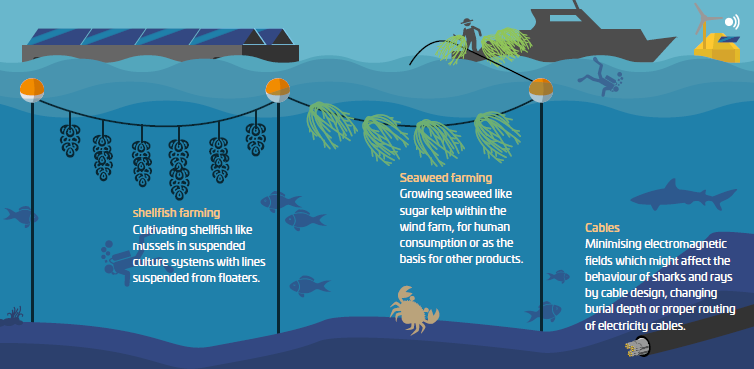
Nature, food, and energy
So, can offshore wind farms share space with more users of the North Sea? Knowledge on how offshore wind farms can best enable different activities is still lacking in the offshore wind sector and beyond. Informed by the perspectives of various stakeholders regarding opportunities they see and challenges they face, the Roadmap for the Dutch North Sea provides insights into what steps are needed to be able to advance multiuse within offshore wind farms.
Road2SID defines actions for three types of multifunctional use on offshore wind farms:
- ecosystem restoration and protection;
- food production or aquaculture;
- alternative forms of energy generation, transport and storage.
Fortunately, some developments are underway in various types of multi-use. The team of Road2SID focused on the multi-use activities and considered options that fall under the three main transitions taking place in the North Sea, namely energy, food and nature transition in the context of climate change.
Nature-inclusively designed wind farm as energy and food factory
A review of existing initiatives and best practices shows that there is a plethora of options to be explored for integrating more functions within existing, planned and future offshore wind farms. For example, multi-use approaches can be followed to store, convert and even increase the energy yield within offshore wind farms, for instance by using the space between turbines for floating solar, wave and/or tidal energy generation.
In addition, offshore wind farms can be designed in a way that they minimise adverse impacts on the environment during the operational lifetime, and nature-inclusive design options also exist to use offshore wind infrastructure and space to even support the restoration of keynote species and strengthen the ecosystem. Last but not least, offshore wind farms may be used as hubs for sustainable food production at sea, for example, breeding, rearing, and harvesting of fish, shellfish and seaweed.
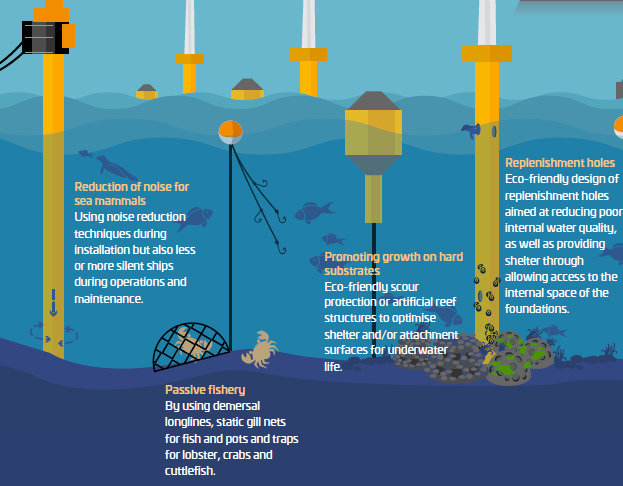
Toolbox of advice
The roadmap notes a variety of technological, environmental, economic and regulatory challenges and opportunities. At the same time, it presents a toolbox full of advice. Better cooperation between all users of the North Sea already promises great gains, by using each other's resources, data, knowledge and experiences. An important role is reserved for governments, which can remove legal barriers and encourage wind developers through tender requirements to adopt multifunctional designs of offshore wind farms.
To achieve a harmonious convergence of different types of use in the North Sea by 2050, Road2SID emphasizes the importance of international integration, data-driven decision-making and innovation. By taking a unified approach, harnessing the power of data and embracing innovative solutions, future offshore wind farms will not only contribute to the energy transition. They can then also serve as harmonious (artificial) infrastructure ecosystems that thrive in symbiotic coexistence with nature.
Putting the puzzle together
Deltares together with MARIN, TNO, Boskalis, RWE, Seaway7, Shell, Tennet and Van Oord joined forces in the Joint Industry Project TKI Road2SID to finish this puzzle. The project was initiated under the umbrella of GROW, a joint research programme on offshore wind that aims to accelerate innovation. Road2SID has been carried out with a subsidy of the Dutch Ministry of Economic Affairs and Climate, National Schemes EZK-subsidies, TKI Offshore Energy (part of energy innovationNL), as taken care of by RVO. In addition, the GROW Common Fund has contributed financially to the project.
Frameworks
The North Sea Agreement and the Program North Sea 2022 – 2027 as part of the National Environmental Vision (NOVI) are recent regulations and agreement frameworks between Dutch governments and stakeholders. They aim to encourage wind energy generation in combination with other functions, including nature and biodiversity, without compromising the reliability and safety of renewable energy production at sea. Moreover, recently the nine countries around the North Sea agreed under the name of the Greater North Sea Basin Initiative (GNSBI), to protect the sea more efficiently and solve the puzzle by optimising spatial planning at international level.


